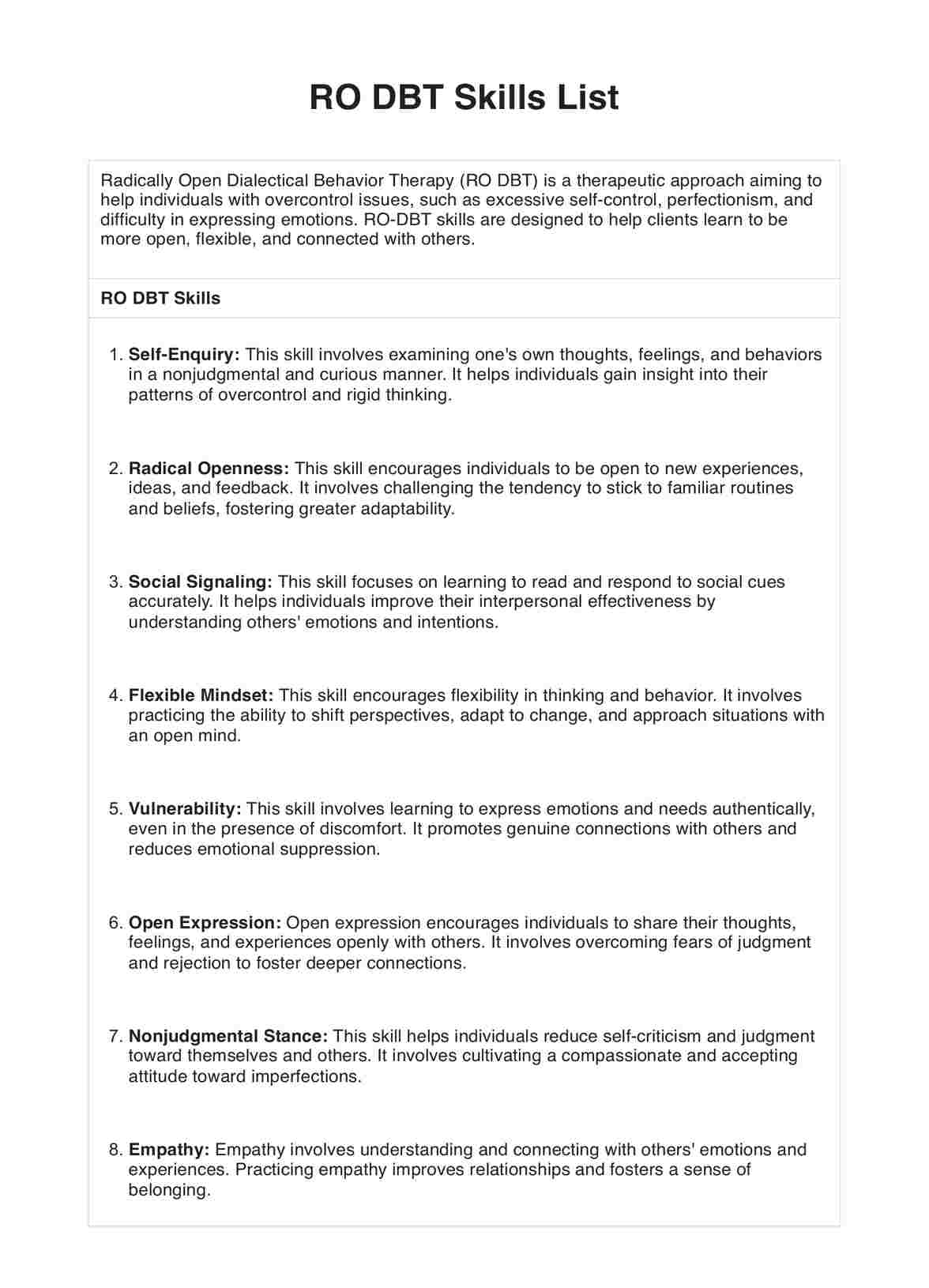The four core skills of dialectical behavior therapy (DBT) are mindfulness, distress tolerance, emotion regulation, and interpersonal effectiveness. These skills are designed to help individuals manage difficult emotions, behaviors, and relationships.

RO DBT Skills Lists
Get access to a free Radically Open (RO) DBT Skills List to help clients with overcontrol issues develop emotional flexibility and enhance social connections.
RO DBT Skills Lists Template
Commonly asked questions
The skills domains of dialectical behavior therapy (DBT) include acceptance skills and change skills. Acceptance skills include mindfulness (module one) and distress tolerance (module four), which focus on accepting and coping with difficult emotions and situations. Change skills include emotion regulation (module two) and interpersonal effectiveness (module three), which focus on changing and improving emotional responses and relationships.
Radical open dialectical behavior therapy (RO DBT) is a variation of dialectical behavior therapy (DBT) that emphasizes radical acceptance and open-ended exploration of emotions. Unlike traditional DBT, which focuses on changing and regulating emotions, RO DBT encourages individuals to fully accept and explore their emotions without judgment.
EHR and practice management software
Get started for free
*No credit card required
Free
$0/usd
Unlimited clients
Telehealth
1GB of storage
Client portal text
Automated billing and online payments











